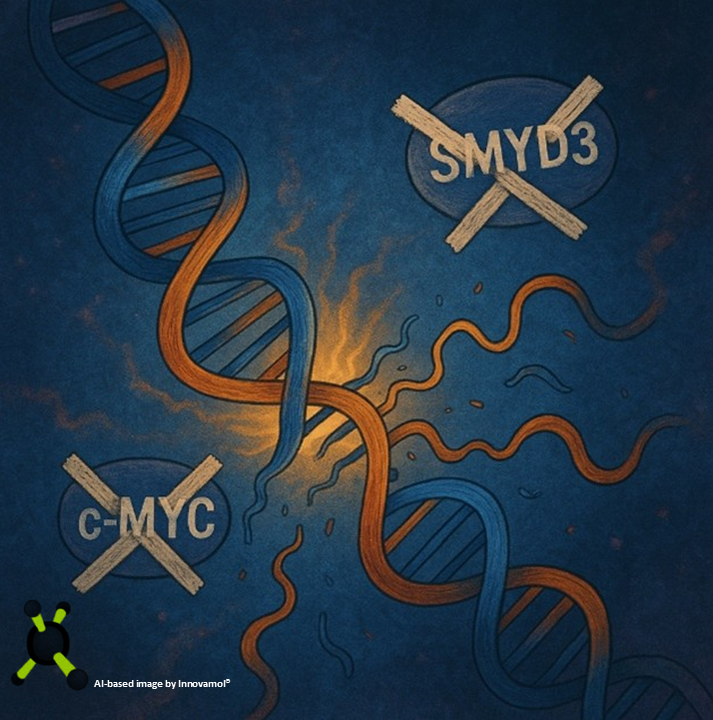At Innovamol, our vision (Science, simply organised) extends beyond data management and regulatory innovation. We actively support and contribute to scientific research in collaboration with leading institutions such as the IRCCS “Saverio de Bellis” Research Hospital and the Institute for Organic Synthesis and Photoreactivity (ISOF), CNR. For us, it is a true honour to be part of research efforts that advance understanding and treatment of complex diseases such as cancer.
Bowel cancer, also known as colorectal cancer (CRC), is one of the most common and deadly cancers worldwide. It is not just the tumour itself that causes concern, but its ability to come back, spread, and resist treatment. Together with our collagues, we published a recent scientific breakthrough in Nature’s Signal Transduction and Targeted Therapy journal that we hope will bring new hope by targeting one of the core reasons why this cancer is so hard to treat: cancer stem cells.
These cancer stem cells are a bit like the queen bees of the tumour colony. They drive growth, resist chemotherapy, and have the uncanny ability to hide away in the body, only to re-emerge and cause a relapse years later. Current treatments like surgery and chemotherapy can destroy much of the tumour but often leave these resilient cells untouched. Our study shines a spotlight on a molecule called SMYD3. This molecule helps cancer stem cells thrive and evade treatment. By blocking SMYD3 in laboratory and animal models, we were able to not only slow down the growth of bowel tumours but also stop them from spreading and make them more responsive to standard chemotherapy.
One of the most promising aspects of the research is a compound called EM127, a targeted inhibitor that essentially disarms SMYD3. When used on its own or in combination with a common chemotherapy drug, it significantly reduced tumour growth and prevented metastasis in mice. In some cases, tumours didn’t just shrink, they disappeared entirely. Even more compelling is that the compound had minimal side effects, showing potential for safe use in humans in the future. What makes this discovery particularly exciting is that it offers a new way to indirectly tackle another notorious cancer gene: c-MYC. This gene plays a central role in many cancers but has long been considered ‘undruggable’. In the paper we found that SMYD3 controls c-MYC in a way that is crucial for cancer stem cells to survive. By going after SMYD3, they may have found a back door to shutting down c-MYC’s harmful effects.
For patients and clinicians, this could open the door to more effective, longer-lasting treatments, especially for those whose cancers return after chemotherapy. For scientists and innovators, it marks an exciting leap forward in the field of cancer therapy. While this work is still at the preclinical stage, the results pave the way for future trials in humans and it is a brilliant example of how a deep understanding of cancer biology can lead to new, smarter strategies to fight one of our most stubborn diseases.
Innovamol will continue to support scientific collaboration and to make knowledge and data organisation accessible to the scientific community. We are proud to contribute to research that brings tangible innovation to healthcare.
To read the open access full scientific publication, please follow this link:
“If we can understand the root of cancer, we can target it more effectively. That is the promise of cancer stem cell research” – Dr. John E. Dick, pioneer of the cancer stem cell theory

